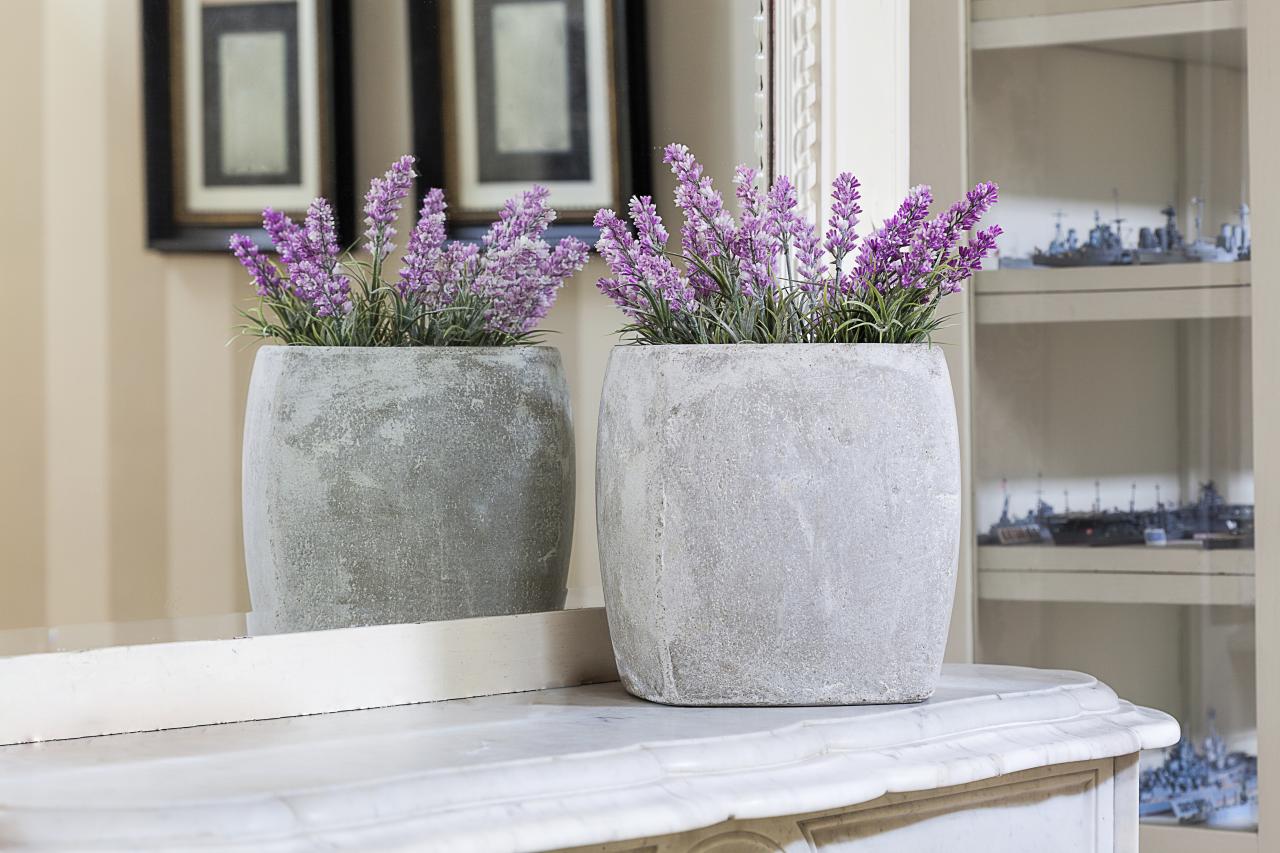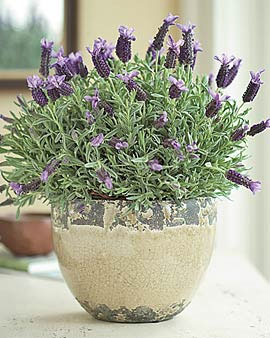
Inside, can lavender grow?
If the plants are put by a window that receives six or more hours of sunlight each day, lavender can be grown indoors. Indoor lavender plants need only receive one watering every two weeks during the growth season to maintain good health and produce flowers. The potting soil needs to be changed for optimal drainage.
Lavender Hidcote and Lavandula angustifolia are two dwarf varieties that thrive indoors because they maintain a compact shape (when pruned properly) and continue to produce fragrant flowers and eye-catching foliage.
In order to grow well indoors, lavender does have certain specific conditions. Continue reading for instructions on:
- Select the ideal container for indoor lavenders.
- The ideal potting mixture for lavender contains 70% potting soil and 30% grit or sand.
- The ideal areas to use lavender (avoid kitchens, bathrooms and other rooms with high humidity)
- How frequently and how much to water lavender indoors (avoid over watering).
- To keep lavender in shape and promote blooming, prune.
Table of Contents
Choose the Right Pot for Indoor Lavenders
Lavenders require a pot with drainage holes in the base so that water may freely drain because their roots prefer to stay nice and dry between waterings.
Choose a pot from the garden center that is both broader and deeper than the container it came in. You shouldn’t need to repot the plant too often because the dwarf or indoor lavender varieties won’t grow as quickly or huge as the outside varieties that are used for harvest.
However, you should periodically check for lavender roots poking through the pot’s drainage holes. When this occurs, you must transplant the lavender in a larger container to prevent the drainage pores from clogging, which would prevent water from leaving.
Early in the spring is the best time to repot lavender because it will lessen transplant shock. If necessary, you can move your lavender at any time of the year, but if you do so outside of the ideal spring window, the plants may lose some of their blossoms since they require some time to become used to their new environment.
One of the biggest mistakes I see people do when growing indoor lavenders is putting the plant in a pot with good drainage, but then putting the pot on a saucer to catch the water so it doesn’t leak away and make a mess.
The soil remains damp due to the decorative pot or saucer’s water collection, which causes the roots to rot.
I relocate my lavender into a larger decorative pot, but I keep the lavender in its smaller pot for watering and leave it for a good 30 minutes so that the excess water has had a chance to escape. This prevents water from leaking out of the pot into my window sill.
Once the soil is dry, which is the lavender’s optimum state, I replant the lavender in the decorative pot with a paper towel in the bottom to absorb further moisture.
The Right Potting Mix for Indoor Lavenders

Therefore, to successfully grow lavender indoors, you’ll need to mimic similar soil conditions to maintain the plant flourishing and smelling great.
Mix grit or sand with regular potting soil. The ideal soil structure, which enables water to drain properly so that the roots may stay relatively dry between watering times, is provided by a ratio of 70% potting mix and 30% sand or grit.
The roots will be able to grow, stay dry, and minimize soil compaction thanks to the air pockets that the sand or grit (both materials work well) will create.
Avoid using too much effort when planting your lavender in its new location because this plant prefers a porous soil structure.
Do Indoor Lavenders need Fertilizer?
Contrary to popular belief, lavender actually grows well on nutrient-poor, sandy soils that range from poor to medium quality, thanks to its Mediterranean origin.
Lavender grown indoors therefore does not require further feeding. If lavender is grown in extremely fertile soil or is given additional fertilizer, foliage growth will be encouraged at the price of flowering, and the plant may grow leggy and its leaves may turn yellow.
If your lavender seems sick, look at this article for a troubleshooting instructions.
The Ideal Place for Indoor Lavender
In their natural habitat, lavenders benefit from abundant light, sufficient air circulation, and warm temperatures. Your lavender should be placed in a bright window that gets at least six hours of light per day during the growing season.
It’s always ideal to place lavenders on the window sill in the sunniest room in the house because they can survive with less light but may grow lanky and produce less scent and summer blooms than if they were in more hours of sun.
Full shadow or merely indirect light are insufficient for lavender survival.
Indoor lavenders thrive in high temperatures and will survive the winter indoors as long as they are not exposed to frosts, as might happen in a greenhouse.
Spacing Indoor Lavender
Avoid crowding smaller indoor lavender plants with other plants or things; instead, arrange them roughly 9 inches apart so that they have enough room for air to circulate through the foliage.
The lavender will benefit from some airflow through the house with an open window throughout the summer because it will keep its foliage dry and help prevent any fungal illness.
Rooms to Avoid for Lavender
Lavender should not be kept in areas that tend to get overly steamy, such as the bathroom or kitchen. A Mediterranean climate with plenty of sunshine, heat, and little to no consistent humidity in the air is ideal for lavender cultivation.
They can develop root rot and fungal diseases if they are exposed to high humidity on a continuous basis. They will be alright as long as they remain away from dampness and on a sunny window sill.
Watering Indoor Lavender
When it comes to watering indoor lavender, overwatering is far more typical than underwatering.
Due to their adaptation to the hot, dry, and sandy conditions of the Mediterranean, lavender plants may tolerate seemingly careless handling and infrequent watering.
Lavenders are excellent minimal maintenance indoor plants to grow because of their hardiness and resilience to drought.
However, if you water lavender too frequently, it may start to look droopy and the leaf may start to turn brown, which are symptoms of stress brought on by over watering.
Root rot is typically indicated by these signs. (To learn how to save wilting lavender, visit my article.)
The first year requires some care and attention when it comes to watering indoor lavender plants, but once they are established, you only need to do it every two weeks during the growing season.
| Lavender Stage Indoor | How Often and How Much Water |
| following planting | To lessen transplant shock, give the lavender a thorough soak right after after planting. |
| Initial 4 weeks. | Giving your lavender a weekly watering for the first four weeks after planting or moving pots is recommended. Use enough water to cause the pot’s bottom to leak. If you choose to grow your lavender in a saucer or other large decorative pot, check to see if water is collecting in the bottom. If it is, empty the pot and add a paper towel to the bottom to assist draw the extra moisture away from the lavender roots. |
| following the first four weeks. | Reduce the frequency of watering to every two weeks. Lavenders benefit from careless, infrequent irrigation. More frequent watering will probably cause root rot, which will destroy the plant. |
| Upon establishment of the lavender. | Once the lavender is established and during the growing season, watering once every two weeks is ideal. Since lavender plants can withstand drought conditions, it is preferable to water them once every two weeks. However, after they are established, they may endure not getting watered for longer than two weeks at a time if you forget or go away. |
| in the winter. | Lavender plants enter a dormant state during the winter and don’t need a lot of water. From late fall to early spring, one irrigation every 4-6 weeks will be sufficient. Just keep in mind that watering too regularly in the winter, when evaporation rates in the soil are reduced, will probably result in root rot. |
Pruning Indoor Lavenders

Early spring, when new, green leaves begin to emerge from the lavender’s base, is the ideal time to prune. Cut back the top green growth by about a third, keeping in mind that you want to keep the lavender in a good, orderly shape so it won’t split or get too woody.
The most crucial thing to remember when pruning lavender is to never cut into the plant’s woody, brown base since doing so will cause old wood to cease growing new shoots, which will prevent the plant from producing blossoms and cause it to die.
To get rid of faded flower stems and keep the lavender in good form, a second trimming is advised in the fall.
Instead of needing pruners, you can use a sharp pair of sterile scissors to clip indoor dwarf kinds like Lavandula angustifolia and Hidcote because their growth is typically softer and easier to cut than that of strong and larger outdoor species.
Although scaled down, pruning indoor lavenders is essentially the same as pruning outdoor types.
Watch this YouTube video for a simple, visual approach to pruning lavenders if you’re unsure.
Key Takeaways
- Select a container with good drainage holes in the base, and avoid placing a saucer under it to catch water because doing so can keep the soil moist and cause root rot.
- Lavender plants for indoor use should be potted in a mixture of around 70% regular potting soil and 20% sand or grit. Sand will facilitate better drainage and create the ideal soil structure for lavenders to flourish.
- Lavenders grow well on soils with low to moderate fertility, so you don’t need to add fertilizer. High fertility will encourage the growth of the foliage at the price of flower production.
- Your indoor lavender should be spaced to allow for some airflow. Lavenders enjoy dry environments, so stay away from steamy or humid spaces like the kitchen or bathroom.
- For the first four weeks, water indoor lavender once a week to lessen transplant shock. Revert to watering once every two weeks during the growing season after four weeks. During the winter, water every four to six weeks.
- Early spring pruning will keep indoor lavender plants in shape, encourage blooming, and keep them from being too woody.
